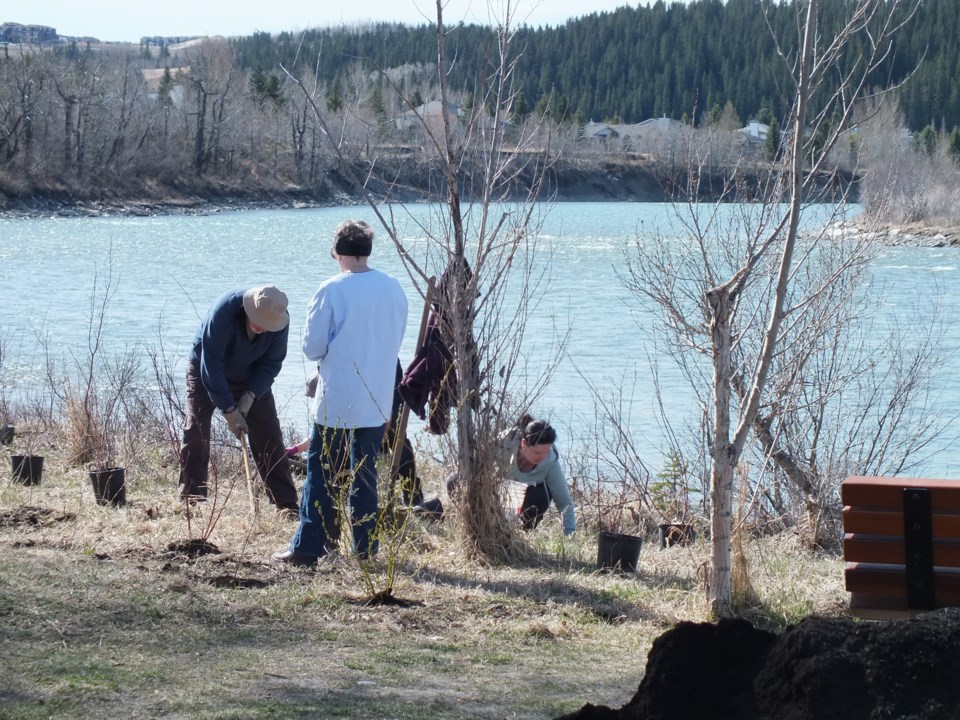Shane Hubl, Director Operations Services for the Town of Cochrane, presented council with the updated plans to prepare for what more and more experts are predicting could be a very serious drought season at a Committee-of-the-Whole meeting Monday.
“Unfortunately water resiliency and water scarcity concerns have become a reality for residents of Alberta and our region, with current drought conditions dominating the majority of recent headlines.” Hubl said.
“Several Alberta river basins, including ours, are facing significant drought conditions due to low rainfall, higher temperatures and lower than average snowpack, which are increasing the potential for significant drought conditions in 2024,” he said.
Alberta Environment has moved to Stage 4 of 5 possible stages but has not yet declared an Emergency under the Water Act. Stage 5 is Emergency.
The province sent a letter out in December asking municipalities to begin a review of the terms of their water licences to be aware of any conditions that may limit their ability to withdraw water during a drought.
Municipal water managers were directed to prepare to be engaged with officials from the Drought Command Team, should conditions within municipal water licences need to be triggered.
Municipalities were asked to develop a water shortage plan.
Hubl said Cochrane’s water plan was already in good shape.
“For example. Cochrane continues to be a provincial leader from a daily water use per capita perspective. Our District Metered Water System tiered water rates place the burden of high water use on those that impact the system the most,” he said.
“We have a robust and well utilized Water Rebate program, we invest in the renewal of our water infrastructure, and have specific programs to minimize water loss throughout our distribution systems.”
Hubl said he’d like to assuage “some drought-related anxiety for Cochrane residents” before outlining the inflow/outflow situation on the Bow River with the aid of a chart.
“From May to October 2023, the Bow River passing through Cochrane had an average daily flow of is 85 cubic metres/second. Of that total, Cochrane’s average use was 0.11 cubic metres/second,” he said. “So this tells us that Cochrane’s overall impact to the Bow River during last summer’s drought was 0.12 per cent.”
Of that amount, three-quarters was returned to the Bow after being treated.
“This isn’t to say that the work we do isn’t vitally important. Water is expensive, and it’s finite,” he said.
The water drawn from the Bow costs the Town $38 million, he said.
Strong water related policies have been the backbone of Cochrane's approach to ensuring water resiliency. Since 2007, we have collectively reduced our total litres per capita per day from 400 to 255, a 36% reduction. Customer use patterns tell us that water conservation is valued and practiced by a healthy majority of residents.
Cochrane can’t solve regional water shortages by itself, he said.
Cochrane's specific location along the Bow River places us in an extremely advantageous position from a water supply perspective, as it is fortunate to be one of the closest communities to the Bow River headwaters in Banff National Park, which provides the community with more than sufficient volume to support the need.
Cochrane's Operations and Engineering groups are actively engaged in identifying and mitigating any risks to water scarcity or resiliency.
Hubl provided an overview of the Town’s The Water Resiliency Action Plan, comprised of significant measures and programs which have ensured Cochrane is well positioned and prepared to respond to not only current drought conditions, but other common municipal water resiliency pressures such as Growth and Aging Infrastructure.
New strategies explored
With so many new residents to Cochrane, administration continues to explore strategies to engage as much of the community as possible.
For 2023, this included things like: a refresh and relaunch of the Water Rebate Program utilizing social media and local news media; and specific local and regional water conservation related communications.
The Town is still working on renewing their Water License Agreement, which, at current growth rates, could expire in as little as four years. The completion of that paperwork is expected to be announced soon.
Alberta Environment and Protected Areas Minister Rebecca Schulz held a news conference this week outlining some of the initiatives the province is engaged in.
“Staff from Environment and Protected Areas, along with Agriculture and Irrigation, are working with water licence holders, major water users, and other partners to develop water conservation plans and water-sharing agreements,” she said in a letter to municipalities.
“Alberta has stood up a Drought Command Team in the event of an emergency and an early first draft of a 2024 Drought Emergency Plan has been completed and is now being refined. We have also initiated drought modelling work that will allow the province to determine how to maximize the province’s water supply.”
There are 51 water shortage advisories in place across Alberta, and recent snowpack measurements indicate all but two measurement sites are below average or much below average, according to the province.
The province also said last week it plans to spend $272 million over three years on irrigation projects.
Also, $125 million will be invested over the next five years for Alberta’s new Drought and Flood Protection Program. This program is designed to help vulnerable municipalities and Indigenous communities across the province develop the long-term infrastructure needed to improve their drought and flood resilience and adapt to severe weather.




